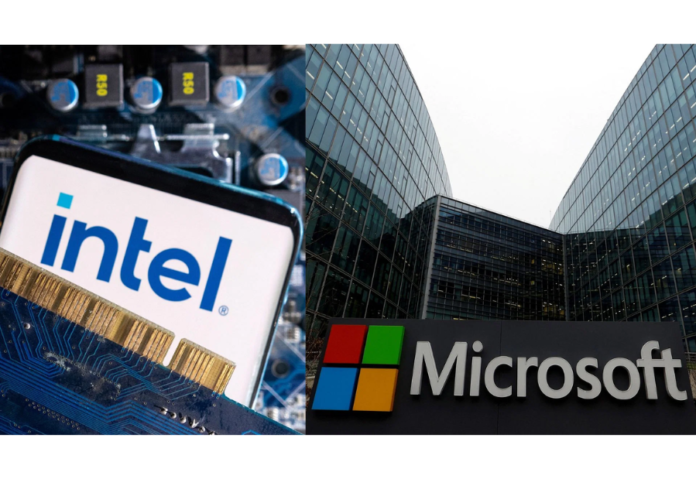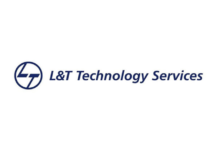Intel announced that Microsoft intends to use its services to manufacture a custom computing chip and that the company expects to exceed an internal deadline of 2025 to overtake its main competitor, Taiwan Semiconductor Manufacturing Co.
Intel (INTC.O.) announced on Wednesday that Microsoft (MSFT.O.) intends to use its services to manufacture a custom computing chip and that the company expects to surpass an internal deadline of 2025 to overtake its main competitor, Taiwan Semiconductor Manufacturing Co. (2330.TW), in advanced chip manufacturing.
The American chipmaker also revealed new insights about how it intends to preserve its edge over TSMC through 2026 and beyond.
Intel made the announcements at the first technology conference for Intel Foundry, the contract manufacturing business it built to compete with TSMC, held in San Jose, California.
Intel says it wants to reclaim the honor of producing the world’s fastest chips from TSMC later this year using what it calls Intel 18A manufacturing technology and to prolong that lead until 2026 with new technology named Intel 14A.
Microsoft will employ its 18A technology to build an unidentified chip, and the company now expects $15 billion in foundry orders, up from $10 billion previously.
TSMC claimed it had “no comment on the competitiveness of our advanced technologies” other than what CEO C.C. Wei said at the company’s most recent investor conference in January.
TSMC’s Taipei-listed stock has risen about 17% this year because of its dominance in creating the types of advanced chips used in AI applications by companies like Nvidia (NVDA.O).
The announcement of 14A technology is the first time the Silicon Valley corporation has revealed details about its aspirations beyond 2025. That was the timetable set by Intel CEO Pat Gelsinger when he took over the company three years ago to reclaim the chipmaking title.
For decades, Intel developed chips just for itself, capitalizing on its manufacturing advantage to create a cycle in which it produced chips with industry-leading performance while charging a premium. These margins, in turn, contributed to manufacturing breakthroughs. However, as Intel lost its manufacturing dominance, its chips became less competitive, and margins dipped, sapping funding for a manufacturing recovery.
Now, Intel is relying on possibly billions of dollars in US government subsidies and business from outside clients.
The announcement of 14A technology is the first time the Silicon Valley corporation has revealed details about its aspirations beyond 2025. That was the timetable set by Intel CEO Pat Gelsinger when he took over the company three years ago to reclaim the chipmaking title.
For decades, Intel developed chips just for itself, capitalizing on its manufacturing advantage to create a cycle in which it produced chips with industry-leading performance while charging a premium. These margins, in turn, contributed to manufacturing breakthroughs. However, as Intel lost its manufacturing dominance, its chips became less competitive, and margins dipped, sapping funding for a manufacturing recovery.
Now, Intel is relying on possibly billions of dollars in US government subsidies and business from outside clients.
It hopes that its extensive experience operating cutting-edge plants across many continents will entice certain customers, particularly those who are concerned about TSMC’s strategy of clustering its most advanced manufacturing in Taiwan.
“It’s a sales pitch that’s working right now. “People want that,” said Stu Pann, Intel Foundry’s executive in charge of global variety.
Intel says it has four “large” customers lined up for its 18A manufacturing technique, but it hasn’t named them. It is unclear whether Microsoft is one of those financially essential customers.
On Wednesday, Intel announced a partnership with Arm Holdings (O9Ty.F.) and the opening of a new tab to make it easier for its facilities to produce chips using Arm technologies. Intel also announced that it will collaborate with the University of California, Berkeley, and the University of Michigan to give students access to its 18A manufacturing technology.
Intel also has a unique technique that analysts believe will be valuable for accelerating power-hungry artificial intelligence systems. Nvidia, the market leader in artificial intelligence chips, has stated that it is investigating Intel’s manufacturing technique, although no agreement has been disclosed.
Intel’s push to attract outside consumers “is the key to the turnaround story,” according to Ben Bajarin, CEO of consulting firm Creative Strategies.
“Unfortunately, it’s an unanswered question, because this is a two-to-three-year journey before we have any inkling of knowing that this is working.”
Do Follow: CIO News LinkedIn Account | CIO News Facebook | CIO News Youtube | CIO News Twitter
About us:
CIO News, a proprietary of Mercadeo, produces award-winning content and resources for IT leaders across any industry through print articles and recorded video interviews on topics in the technology sector such as Digital Transformation, Artificial Intelligence (AI), Machine Learning (ML), Cloud, Robotics, Cyber-security, Data, Analytics, SOC, SASE, among other technology topics.






